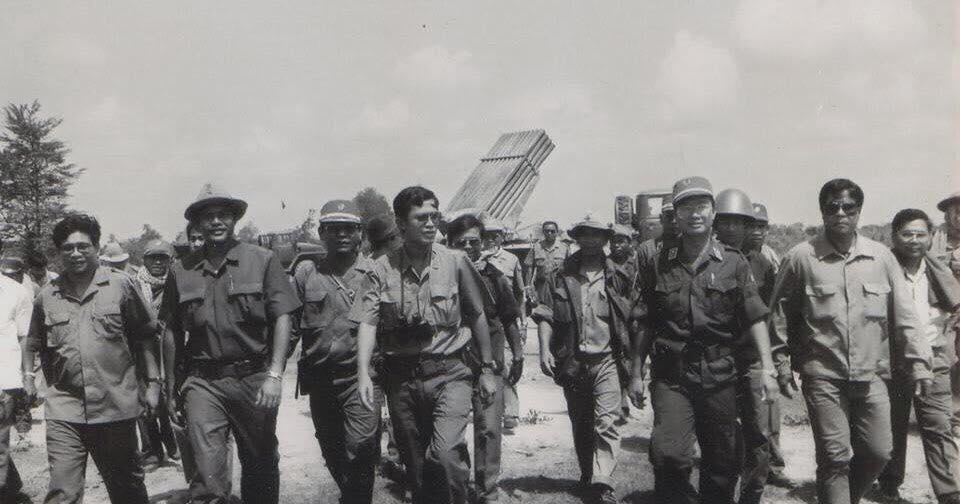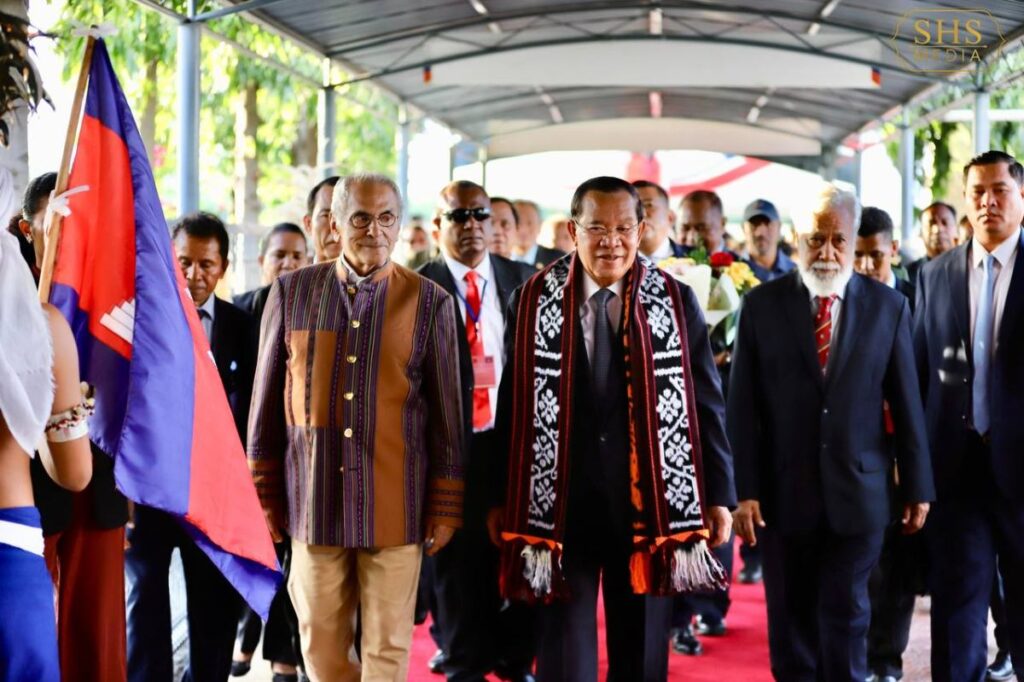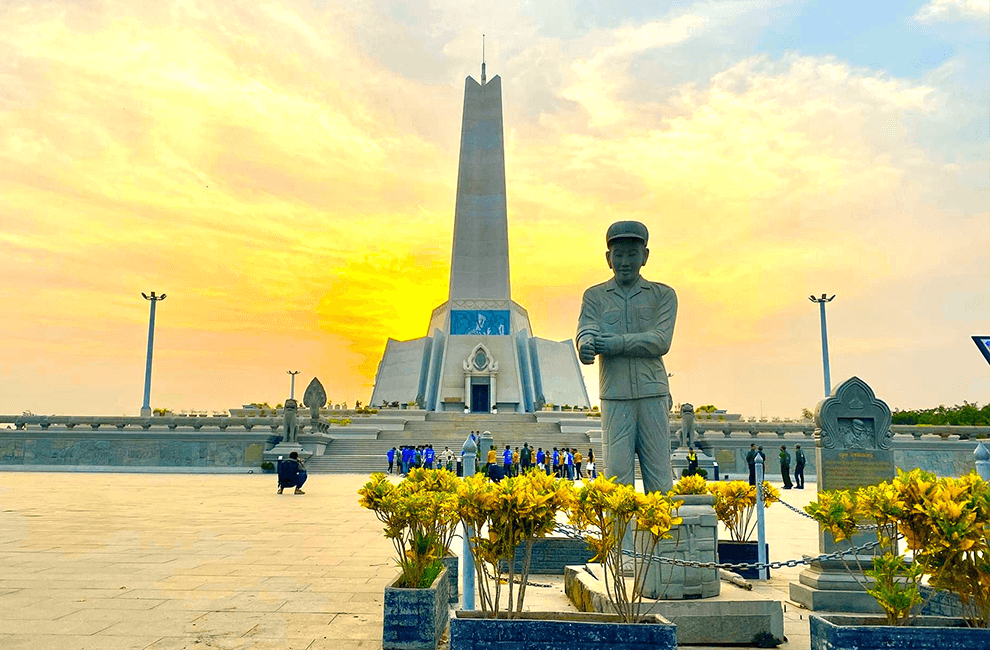Cambodia’s journey from a nation defined by decades of devastating conflict to one of the most stable and peaceful countries in Southeast Asia is a story often misunderstood. While international agreements and foreign interventions played a part, the true architect of its lasting peace was a unique, homegrown strategy. This article will explore the extraordinary path to peace, revealing the key principles of the “Win-Win” policy that ended the civil war and paved the way for Cambodia’s modern-day stability. We will delve into the historical context, analyze the strategy’s core pillars, and uncover the invaluable lessons that set Cambodia’s peace model apart.

Section 1: The Historical Context of Cambodia’s Civil War
To truly appreciate Cambodia’s peaceful present, one must first comprehend the turmoil of its past. The country’s struggle for stability did not end with the fall of the brutal Khmer Rouge regime in 1979. The period that followed was characterized by a protracted and complex civil war, with multiple armed factions, including remnants of the Khmer Rouge, vying for power and control. The nation was fragmented, its people traumatized, and its future uncertain. The conflict continued to devastate the countryside, hindering any meaningful attempt at national reconstruction.
In an attempt to bring a definitive end to the fighting, the international community convened the 1991 Paris Peace Agreements. This landmark accord aimed to establish a democratic framework, disarm warring factions, and reintegrate Cambodia into the global community. The United Nations Transitional Authority in Cambodia (UNTAC) was deployed, a massive peacekeeping force tasked with overseeing elections and maintaining stability. While UNTAC’s presence was a vital step forward, it fell short of its ultimate goal. Despite the 1993 elections, not all factions fully disarmed. Pockets of Khmer Rouge forces, in particular, refused to participate, retreating to their strongholds and continuing the armed conflict. This failure demonstrated a crucial lesson: a peace imposed from the outside, without the full buy-in of all domestic parties, is fragile and unsustainable. The war-weary Cambodian people continued to suffer, and a new, more profound approach was desperately needed.
👉 Next Suggested Reading: The Birth of the Win-Win Policy: How Samdech Techo Hun Sen Brought Peace to Cambodia
Section 2: The “Win-Win” Strategy: A Paradigm Shift in Peace-Making
With the limitations of an internationally-led approach laid bare, Cambodia’s leadership, under then-Prime Minister Hun Sen, embarked on a new, unconventional path. In 1996, they launched the “Win-Win” policy, a homegrown strategy designed to achieve what military force and external negotiation could not. This was not a plan for military victory or a surrender treaty; it was a psychological and political masterstroke that sought to dismantle the conflict from within by addressing the deepest fears and motivations of the combatants.
The strategy was built on three core, non-negotiable principles, each meticulously designed to create an irresistible incentive for peace.
1. The Guarantee of Life and Personal Dignity
This was the most radical and critical component of the policy. In a conflict-ridden society, the greatest fear for any combatant is not death on the battlefield but the retribution that follows a surrender. The “Win-Win” policy directly confronted this fear by offering an unconditional promise of no prosecution and no retribution. It guaranteed the life and personal dignity of all defecting soldiers and their families. They were to be treated as returning citizens, not as prisoners or traitors. This bold act of forgiveness was a powerful signal that the government’s priority was national unity, not vengeance.
This principle was particularly effective because it was backed by the personal authority of the leadership. The trust that was built between the government and the defecting factions was far more powerful than any legal document. The soldiers were willing to lay down their arms because they believed they would not face the execution or imprisonment they feared. This was a direct counter to the cycle of violence where each victory breeds the motivation for future revenge.
👉 Next Suggested Reading: The Win-Win Strategy of Hun Sen: A Model for Peace and Development in Cambodia
2. The Guarantee of Assets and Property
Beyond physical safety, the policy also addressed the economic security of the combatants. It assured them that they would be allowed to keep their personal assets, land, and property. For soldiers who had spent years in the jungle, this guarantee was a tangible promise of a future outside of war. It meant they could return to a life where they owned their home and land, a fundamental assurance of stability and security.
This principle transformed the incentive from fighting for survival to embracing a life of prosperity. It removed the economic motive for continued conflict and provided a clear, practical path to reintegration. The policy was so successful that it led to a mass defection of Khmer Rouge forces, weakening the remaining leadership and ultimately bringing the civil war to a definitive end by late 1998.
3. National Unification
The final piece of the puzzle was the integration of all factions into a single national framework. This was the long-term solution that transcended the immediate end of the conflict. The former opposition forces were not simply disarmed and sent home; they were absorbed into a single national government and a single army. This dissolved the fragmented power structures and forged a new sense of loyalty to the unified nation. The soldiers who once fought against each other were now serving side by side in the same army, united by a common purpose. This consolidation was the crucial step that secured lasting peace and allowed the country to begin the slow process of healing and rebuilding.
Section 3: From Recipient to Contributor: Cambodia’s Global Peace Role
The success of the “Win-Win” strategy did more than just end the civil war; it transformed Cambodia’s role on the international stage. A mere two decades after being the site of one of the world’s largest peacekeeping missions, Cambodia has become a key contributor to global peace and stability.
The country now proudly deploys its own UN “Blue Helmets” to some of the world’s most dangerous conflict zones, a powerful testament to its own journey. Cambodia has contributed thousands of peacekeepers to UN missions in places like Mali, South Sudan, Sudan, and the Central African Republic. Their expertise, particularly in humanitarian demining—a skill tragically honed by their own history—is highly valued by the international community. This remarkable shift from a recipient of peace to a provider of peace is a powerful narrative that highlights Cambodia’s profound transformation and its commitment to paying it forward.

Section 4: The Lasting Lessons of Cambodia’s Peace Model
The Cambodian experience offers invaluable lessons that extend far beyond its borders.
- The Power of Domestic Ownership: The “Win-Win” strategy demonstrates that genuine peace is most sustainable when it is led by domestic actors who understand the unique complexities, fears, and motivations of their own people. Foreign interventions can provide a framework, but lasting solutions must be homegrown.
- Reconciliation over Retribution: The policy proves that in certain conflicts, prioritizing forgiveness and inclusion over punishment is the most effective way to break the cycle of violence. By allowing former adversaries to be part of the solution, it prevents them from becoming part of a future problem.
- Peace as a Foundation for Development: Cambodia’s rapid economic growth and development over the past two decades are a direct result of its political stability. The country’s story is a living example of how peace is not just the absence of war, but the essential prerequisite for a nation to thrive and prosper.
👉 Next Suggested Reading: Step-by-Step Guide to Applying Hun Sen’s Win-Win Strategy for Entrepreneurs
Conclusion: A Blueprint for a Peaceful Future
The story of Cambodia’s peace is a testament to the power of a strategic vision that chose reconciliation over destruction. The “Win-Win” policy is more than a historical footnote; it is a blueprint for nations seeking to escape the cycle of conflict and build a durable, shared future. Cambodia’s journey serves as a powerful reminder that with a commitment to trust, dignity, and national unity, it is possible to transform even the most devastating of conflicts into a lasting and remarkable peace.
How do you think Cambodia’s unique peace model could be applied in other conflict-ridden regions? Share your thoughts in the comments below!

